|
2003
Åmell runestone
Runic inscription:
 Antikvitetshandlaren Åke Åmell, stammar från Fale Bure den
äldre, lät resa sten som familjegrav och till minne av god
hustru Vera. Kalle rista
Antikvitetshandlaren Åke Åmell, stammar från Fale Bure den
äldre, lät resa sten som familjegrav och till minne av god
hustru Vera. Kalle rista
 The antique dealer Åke Åmell,
descended from Fale Bure the elderly, let
raise this stone as a family grave and in
memory of good wife Vera. Kalle carved
The antique dealer Åke Åmell,
descended from Fale Bure the elderly, let
raise this stone as a family grave and in
memory of good wife Vera. Kalle carved
|
|
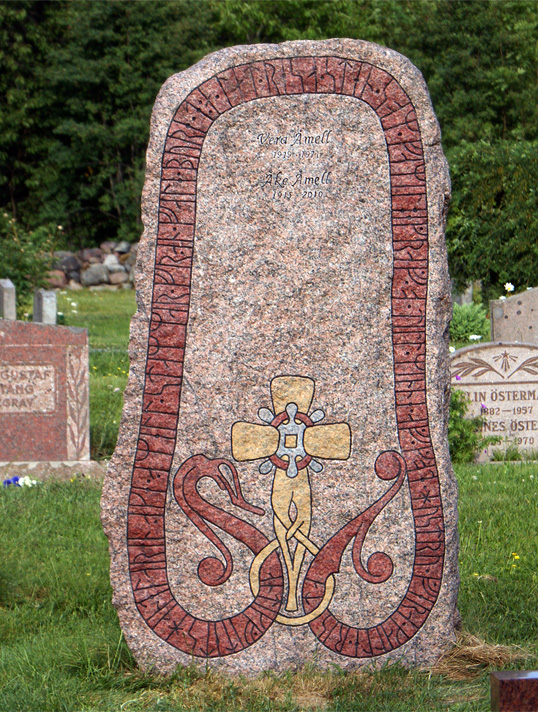 |
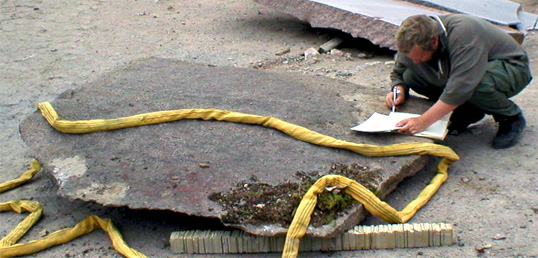 |
|
At Vätö quarry a good topic was found for
the rune stone, a slab of the rock which with some
adjustments would be fine. |
Åke wanted a larger rune stone as the family grave for the
family at Ljusterö church. Åke's own sketch had to lay as
the basis for the ornamentation I created. |
| |
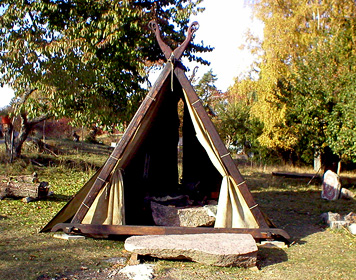 |
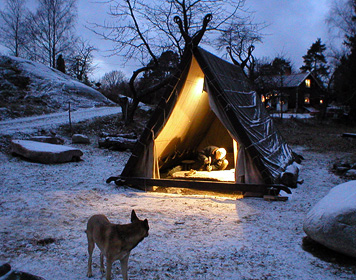 |
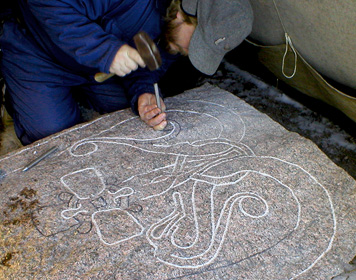 |
September 2002
The rune stone topic is placed in front of the tent. When
winter comes, I move the tent over the rune stone as
protection. |
Winter 2002/2003
Short dark days, icy winds and snow. The work was slow
during these months. |
Hard to imagine hot summer days with hot
rune stones that you can hardly sit on. |
| |
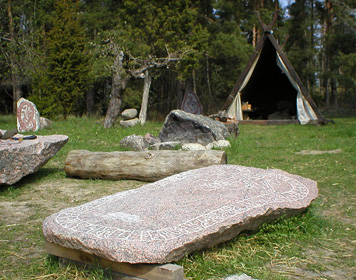 |
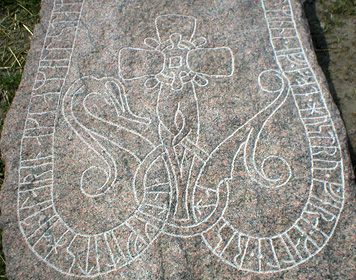 |
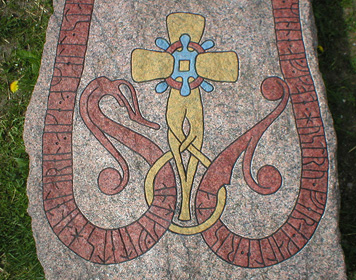 |
May 2003
The rune stone is finished carved. |
Ornamentation unpainted |
Newly painted |
| |
| |
After three
hours of work, it stands there ...
a rune stone as the family grave stoneThe sound when the
heavy rune stone came into place and when the base and the
runestone surfaces met, we remember the sound for a long
time, a stifled: "boong!"
The picture >
Ellinor and Evert, both satisfied
with their work effort and results. |
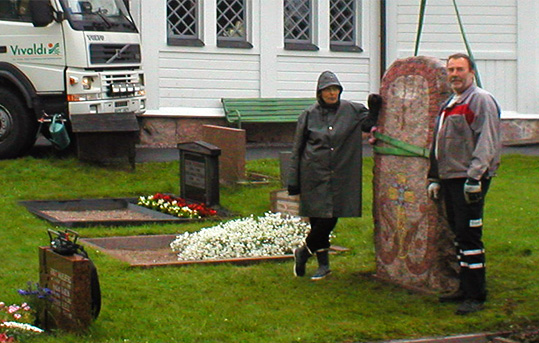 |
|
|
... and the rune stone has a
backside.. |
| |
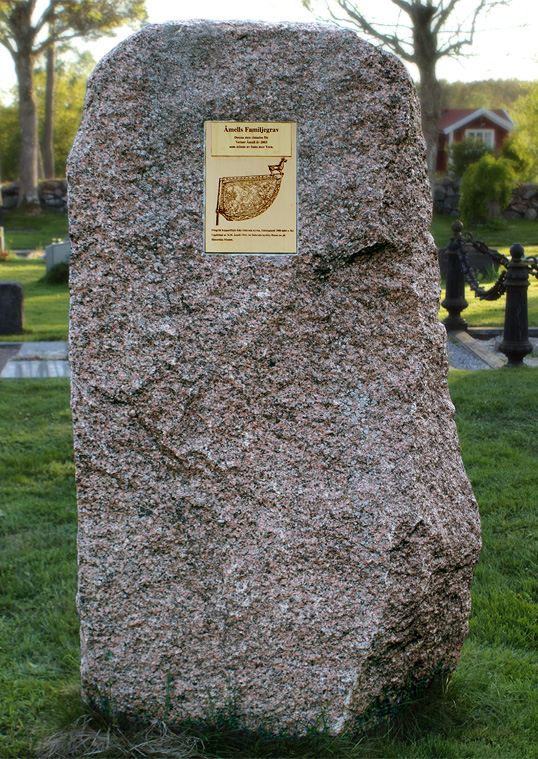 |
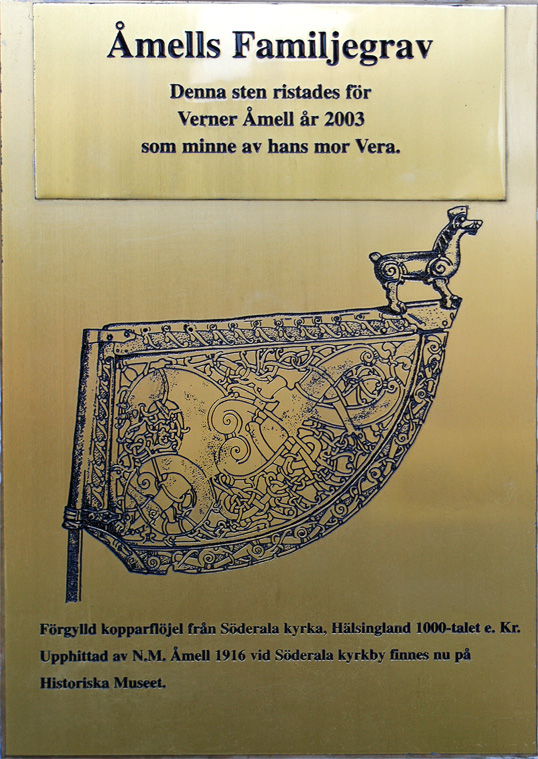 |
| On the runestones back I cut a
recess in which a heavy bronze plate could be folded in. |
Åke Åmell's father, Nils-Magnus
Åmell, traveled around in the early 1900s and searched for
antiques. In 1916 he found the Söderala vane (flöjel), now
at the Historical Museum in Stockholm. |
| |
| |
Year 2011
I visit Ljusterö Church
again and carved in
another name:
Åke Åmell |
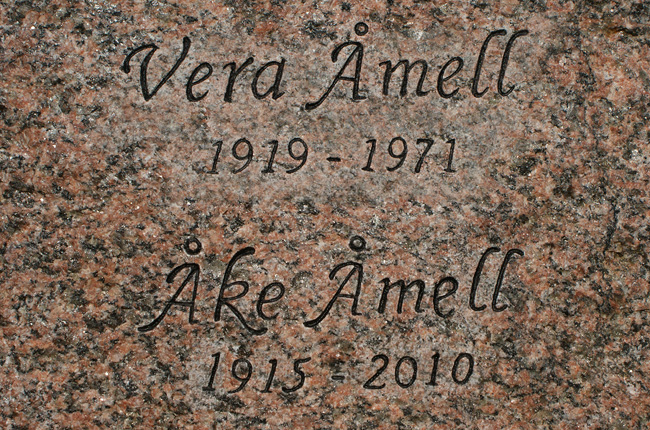 |
|
| |
|


